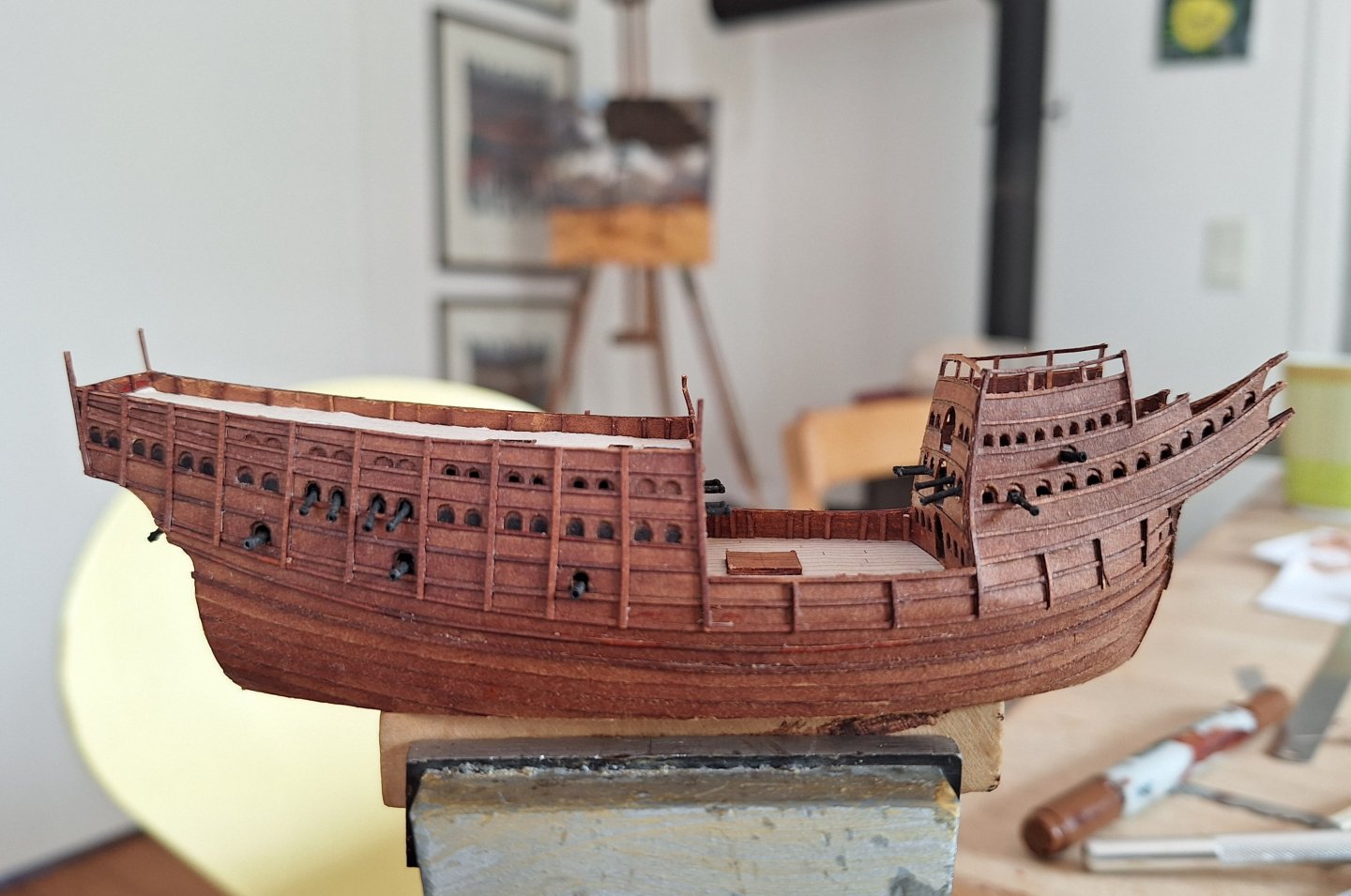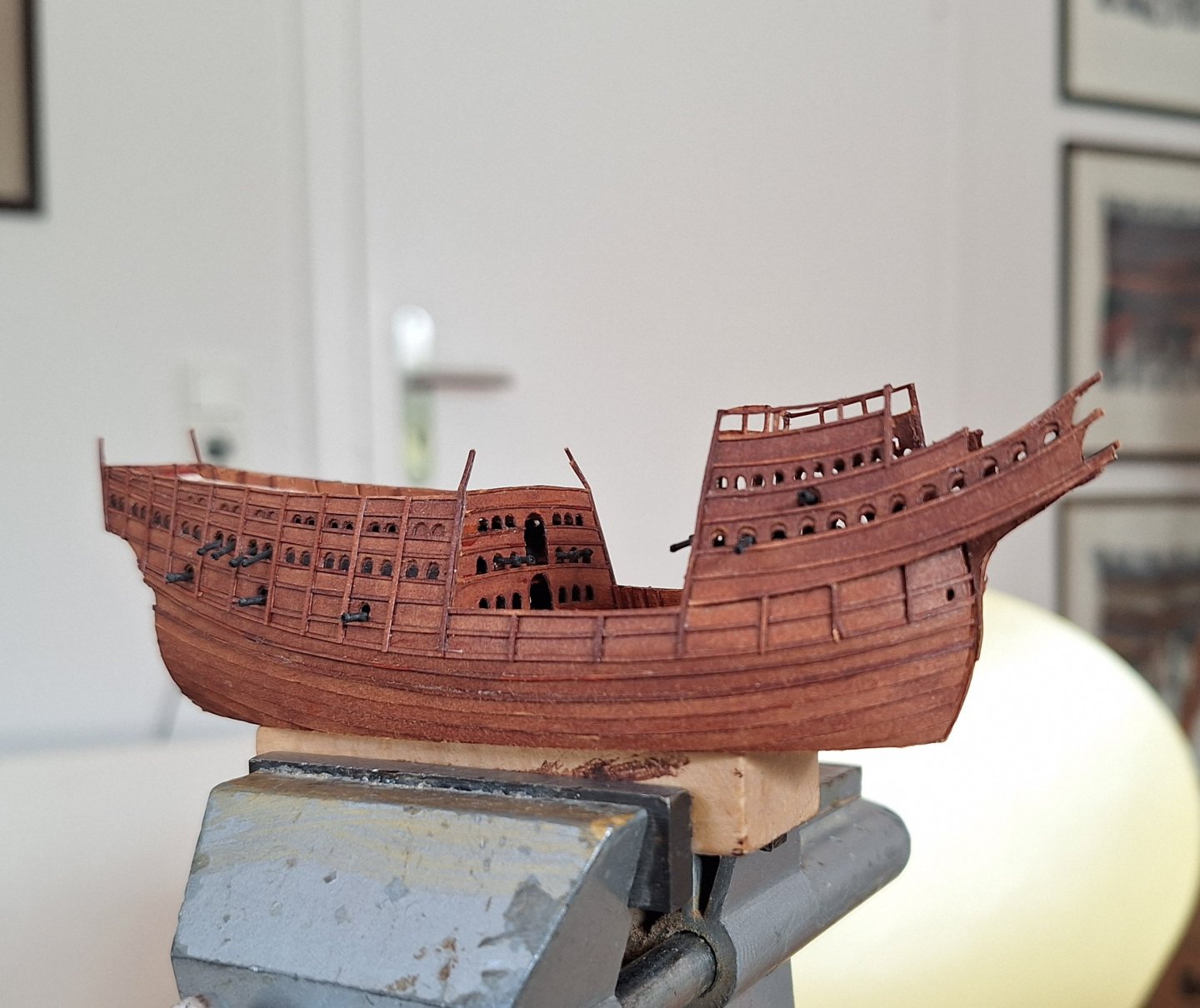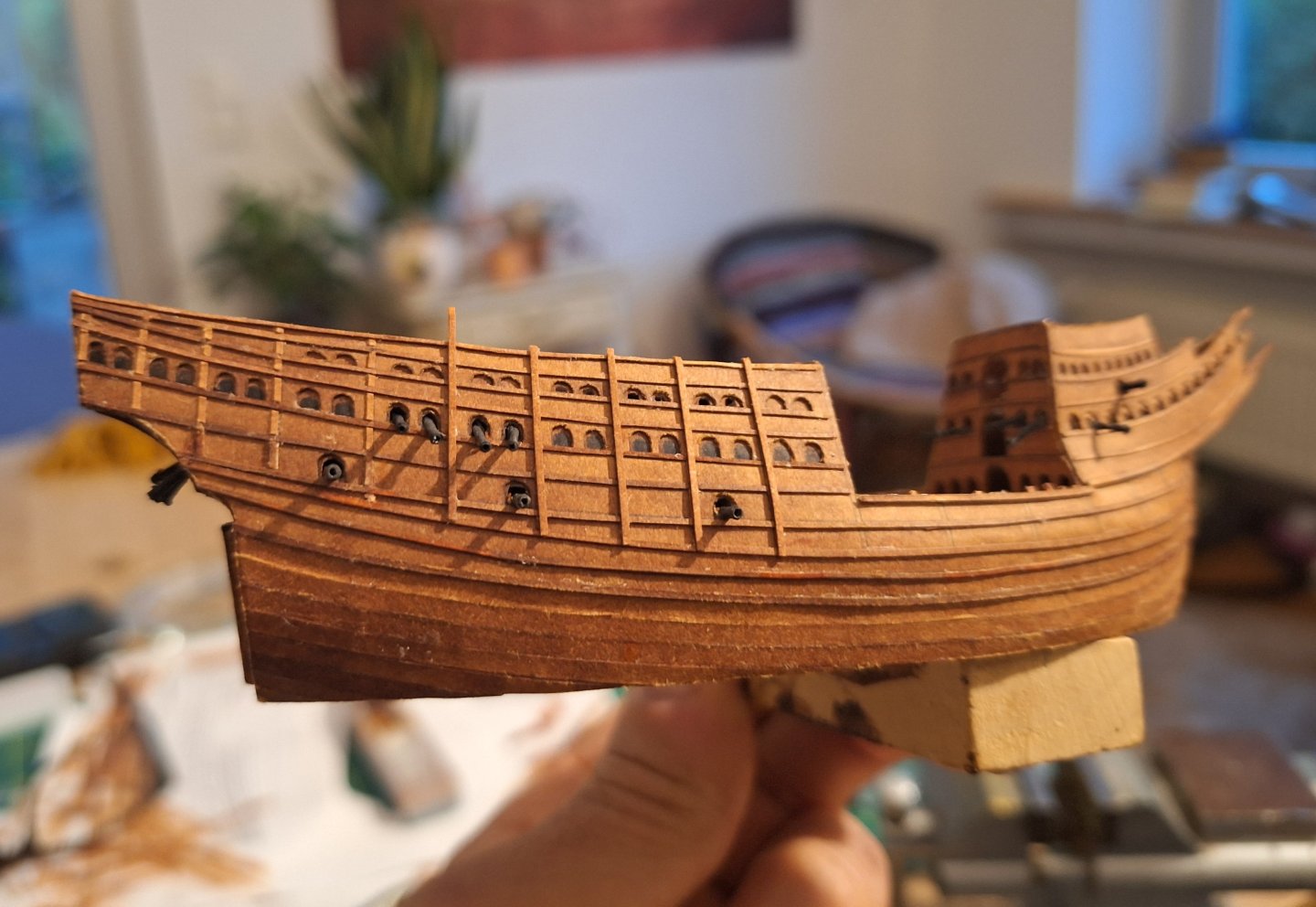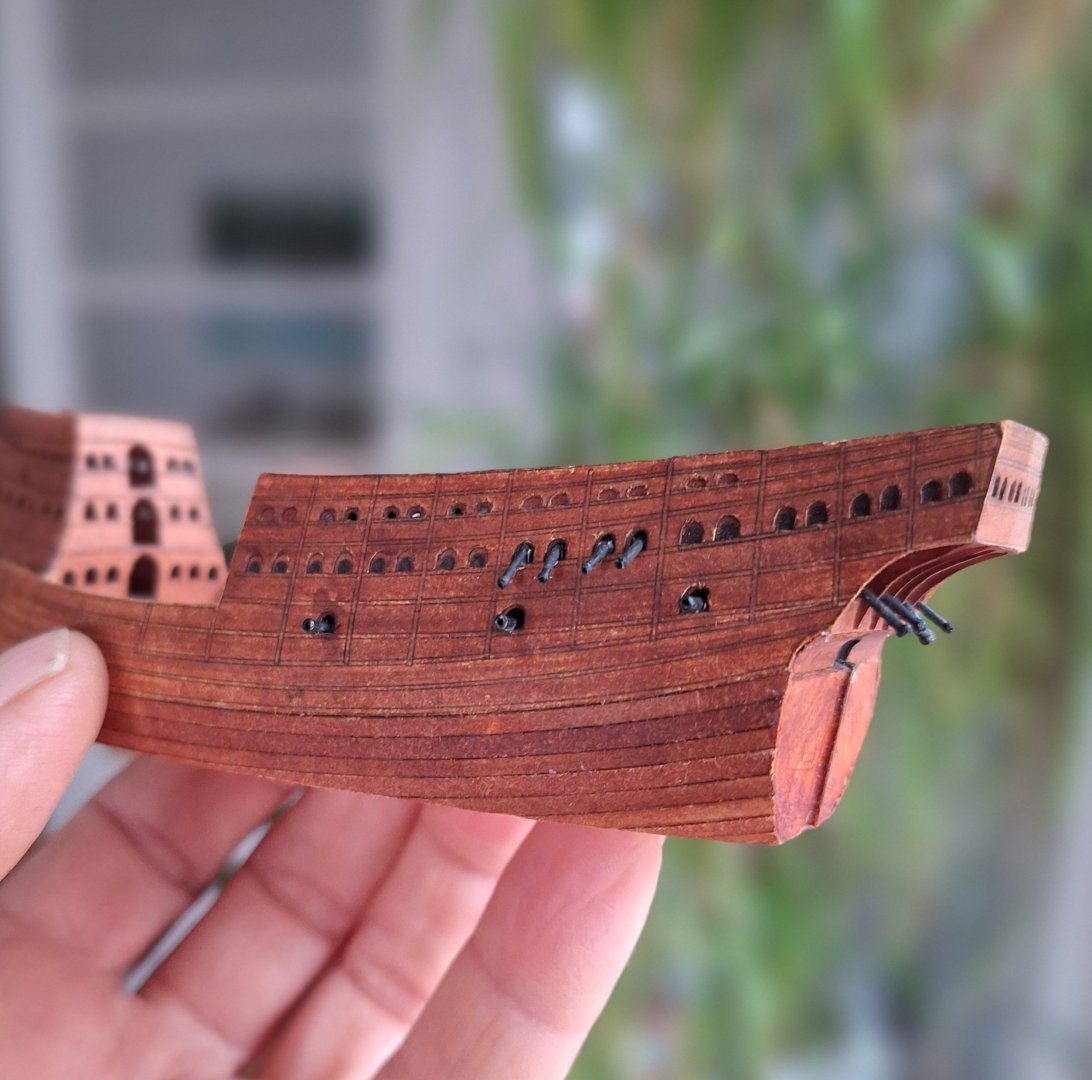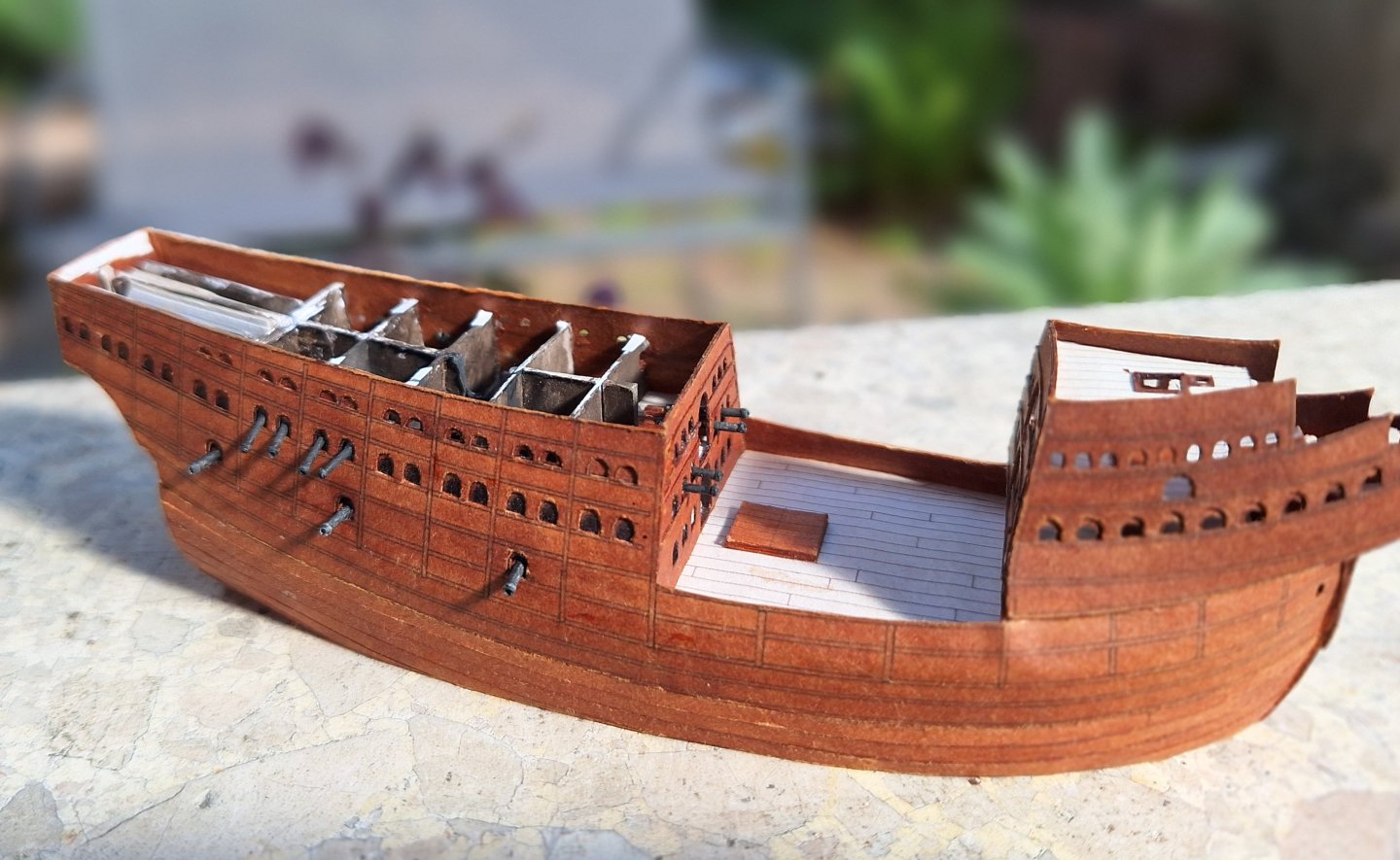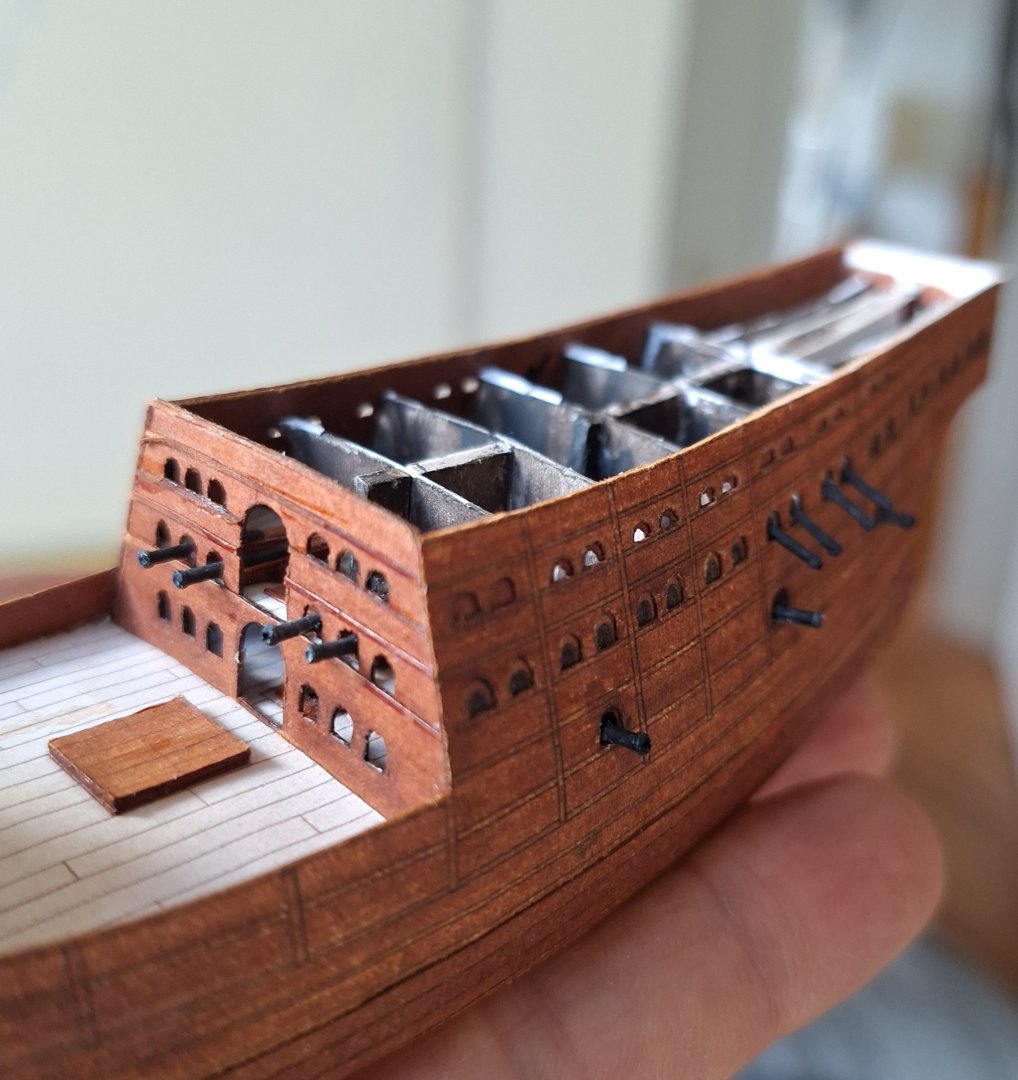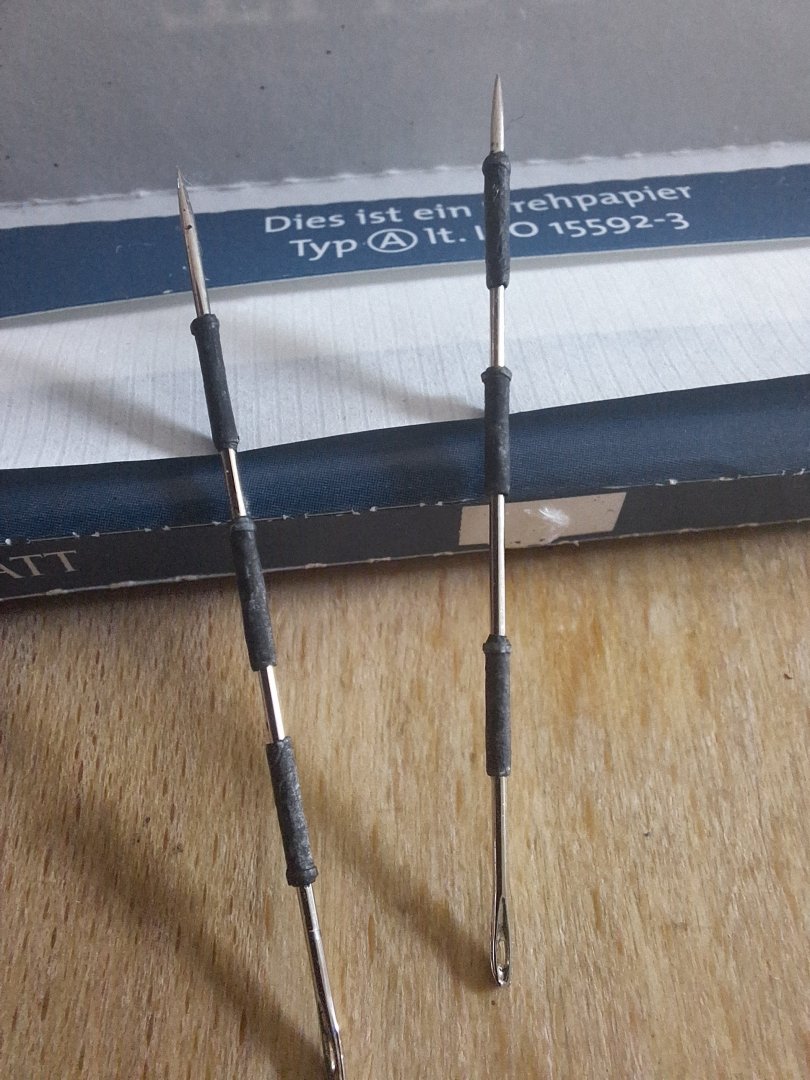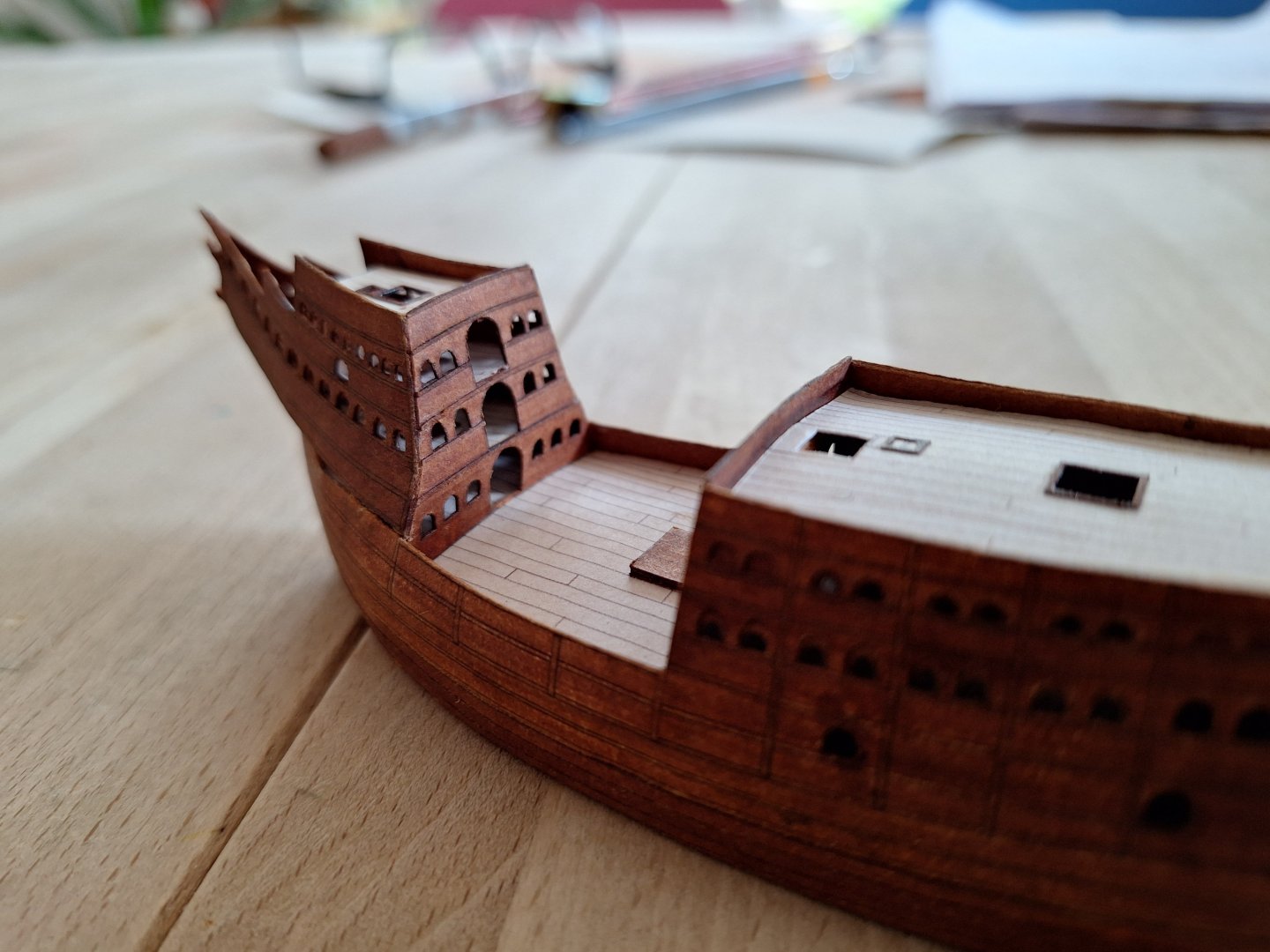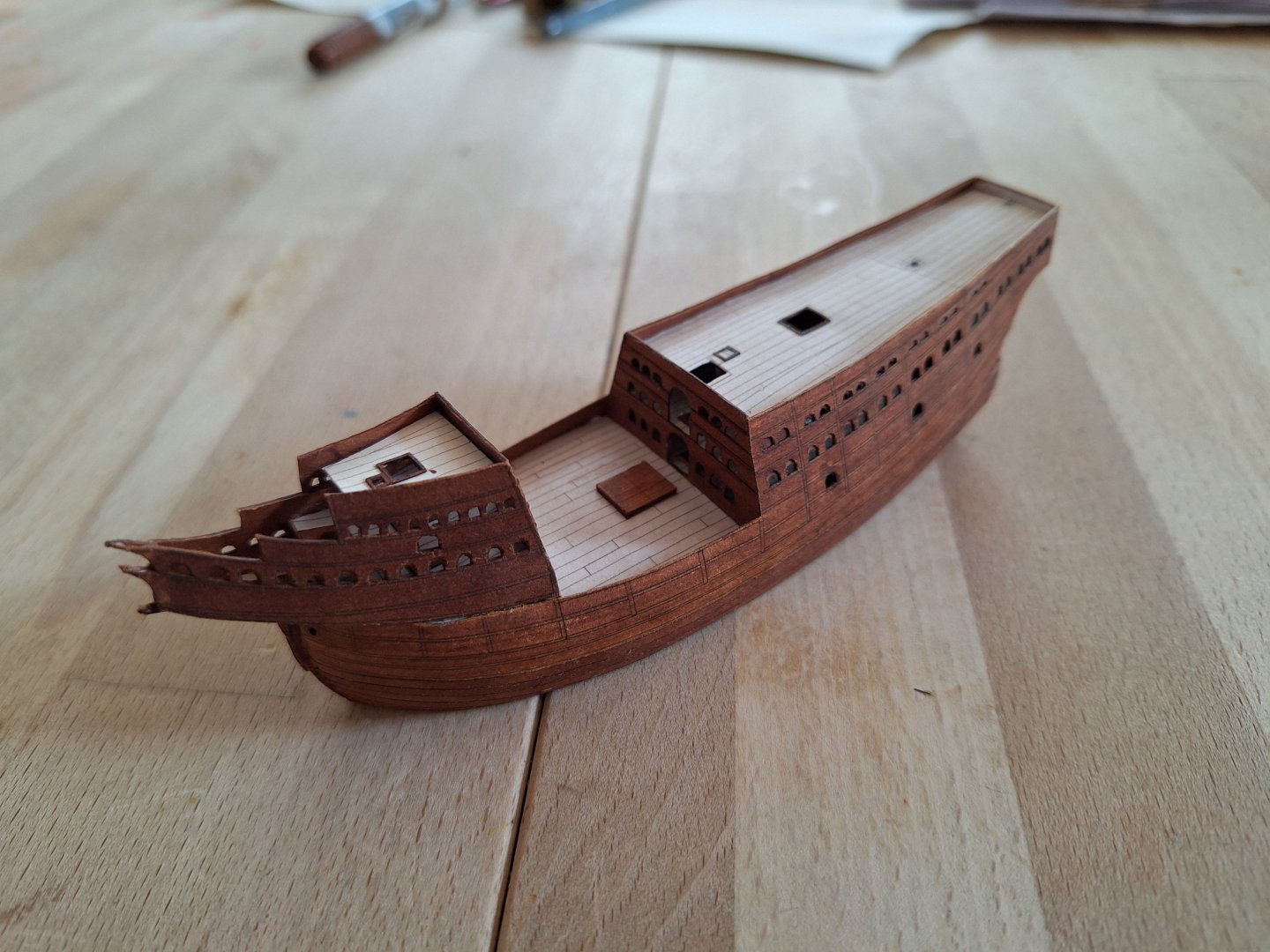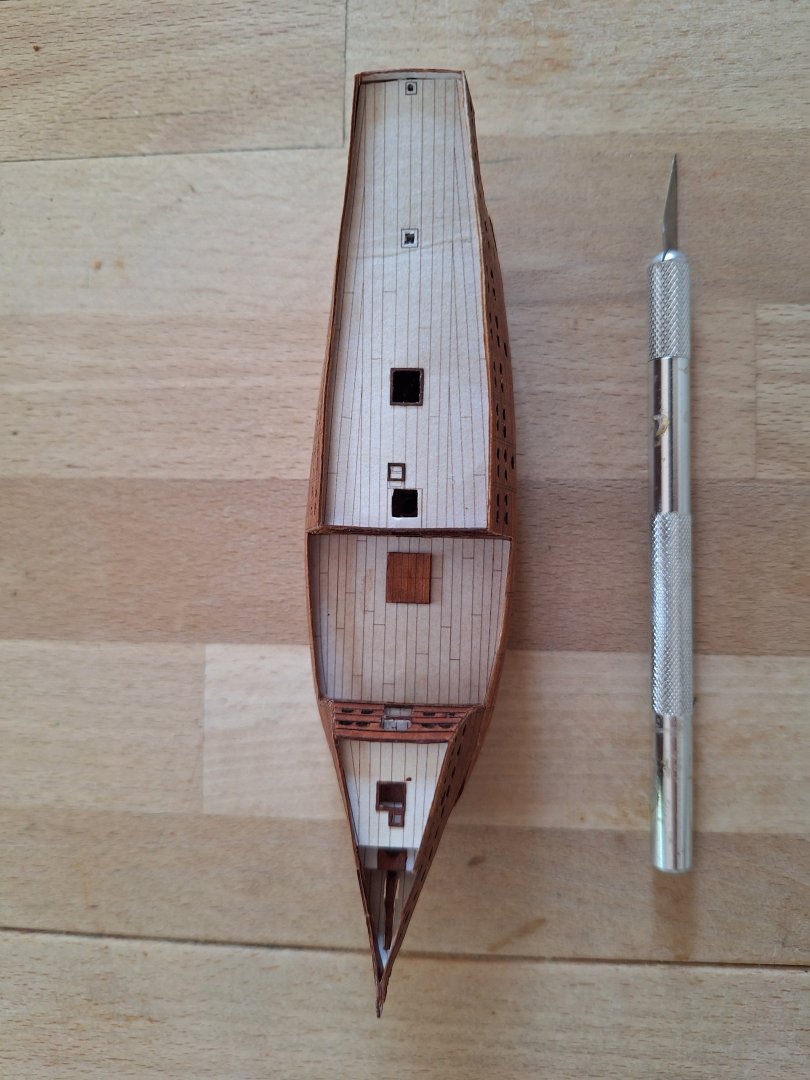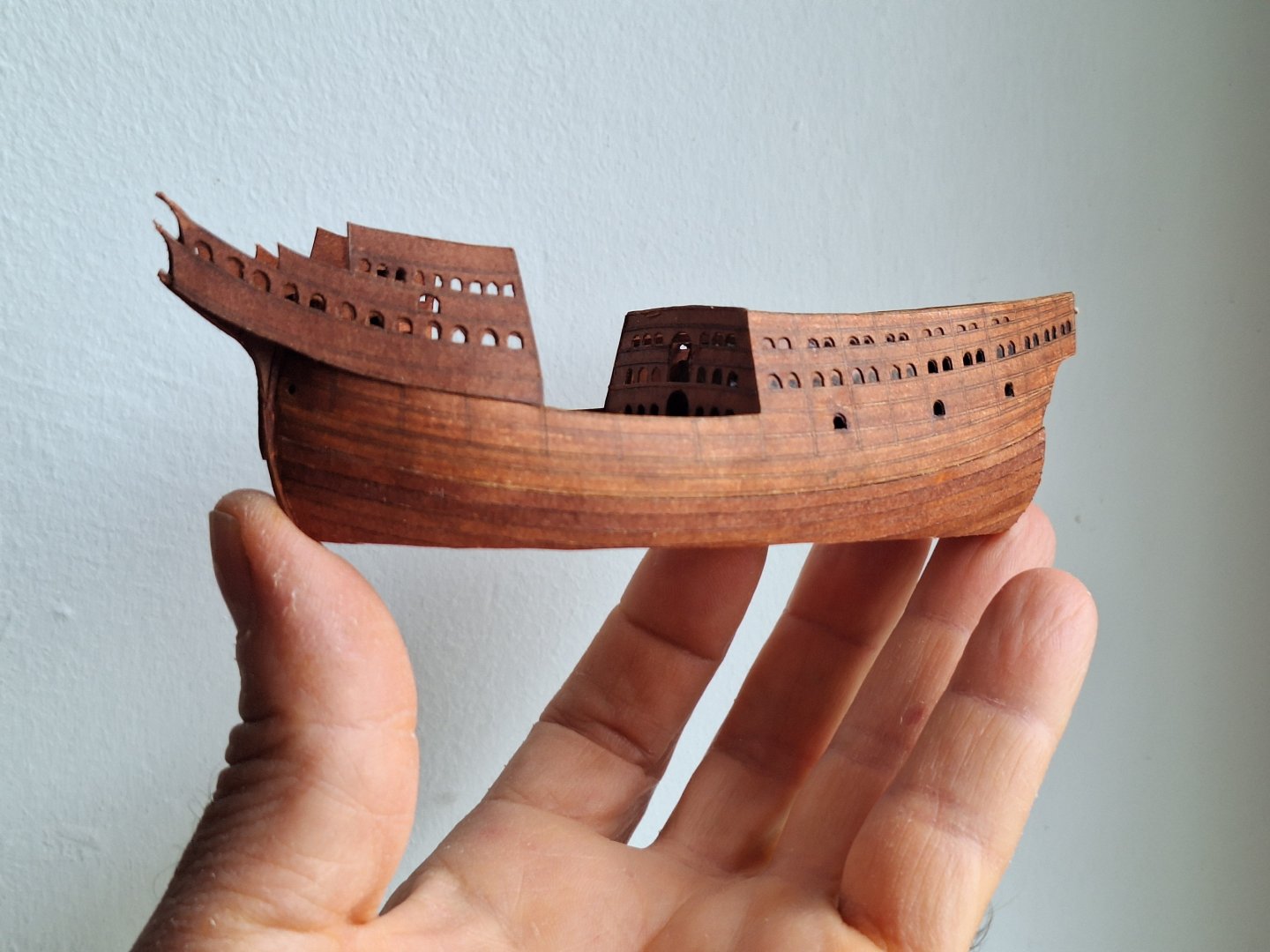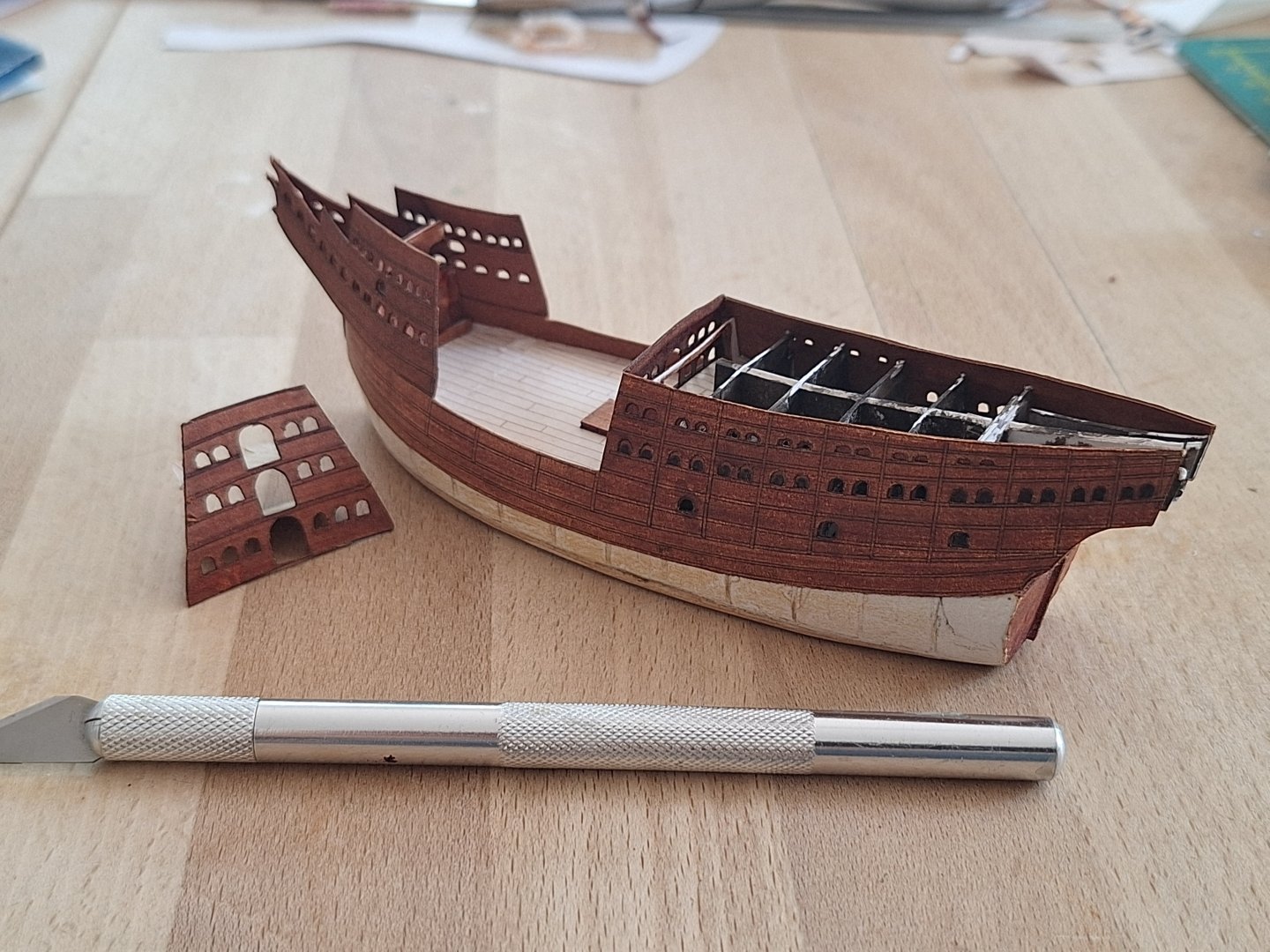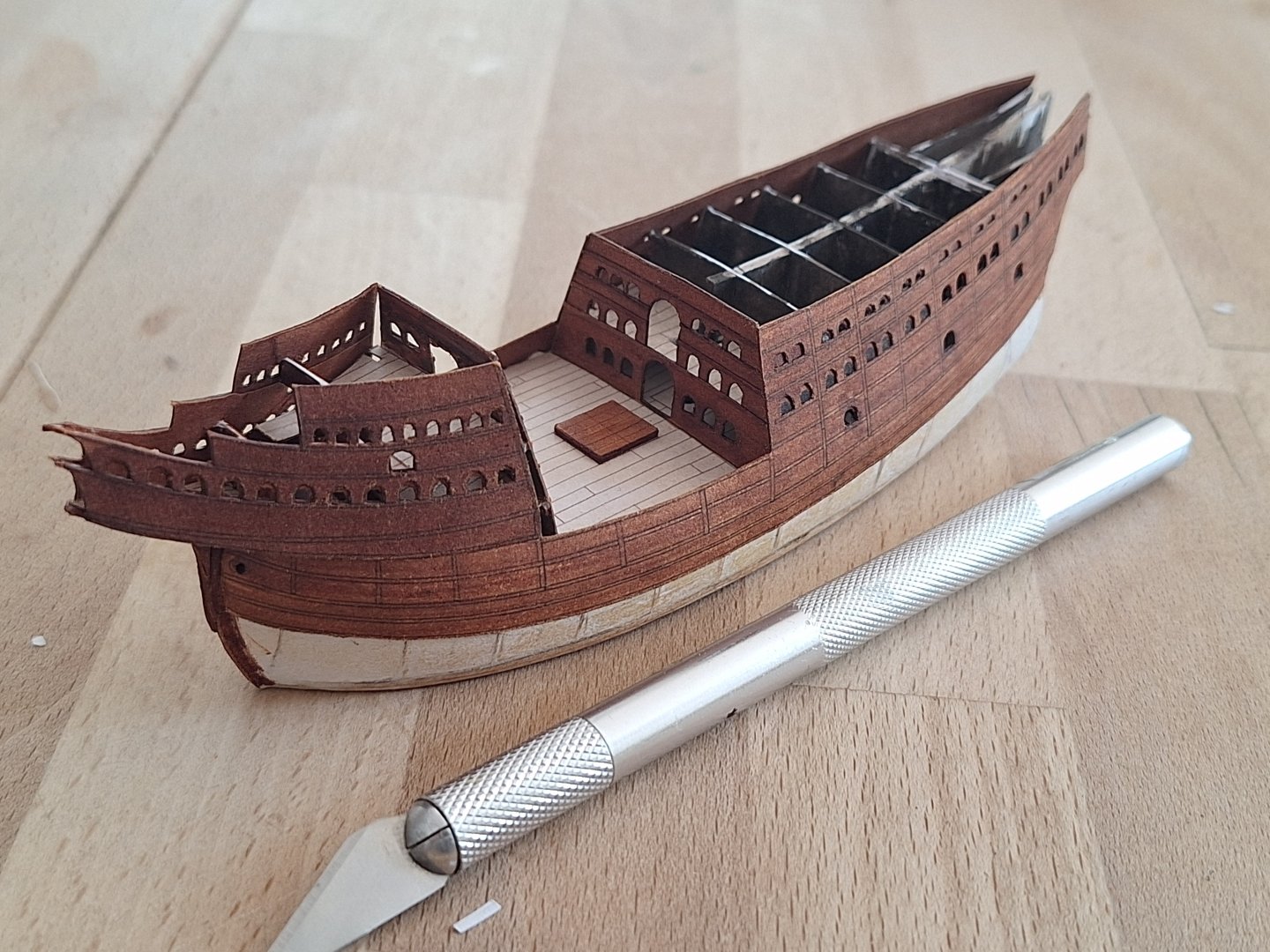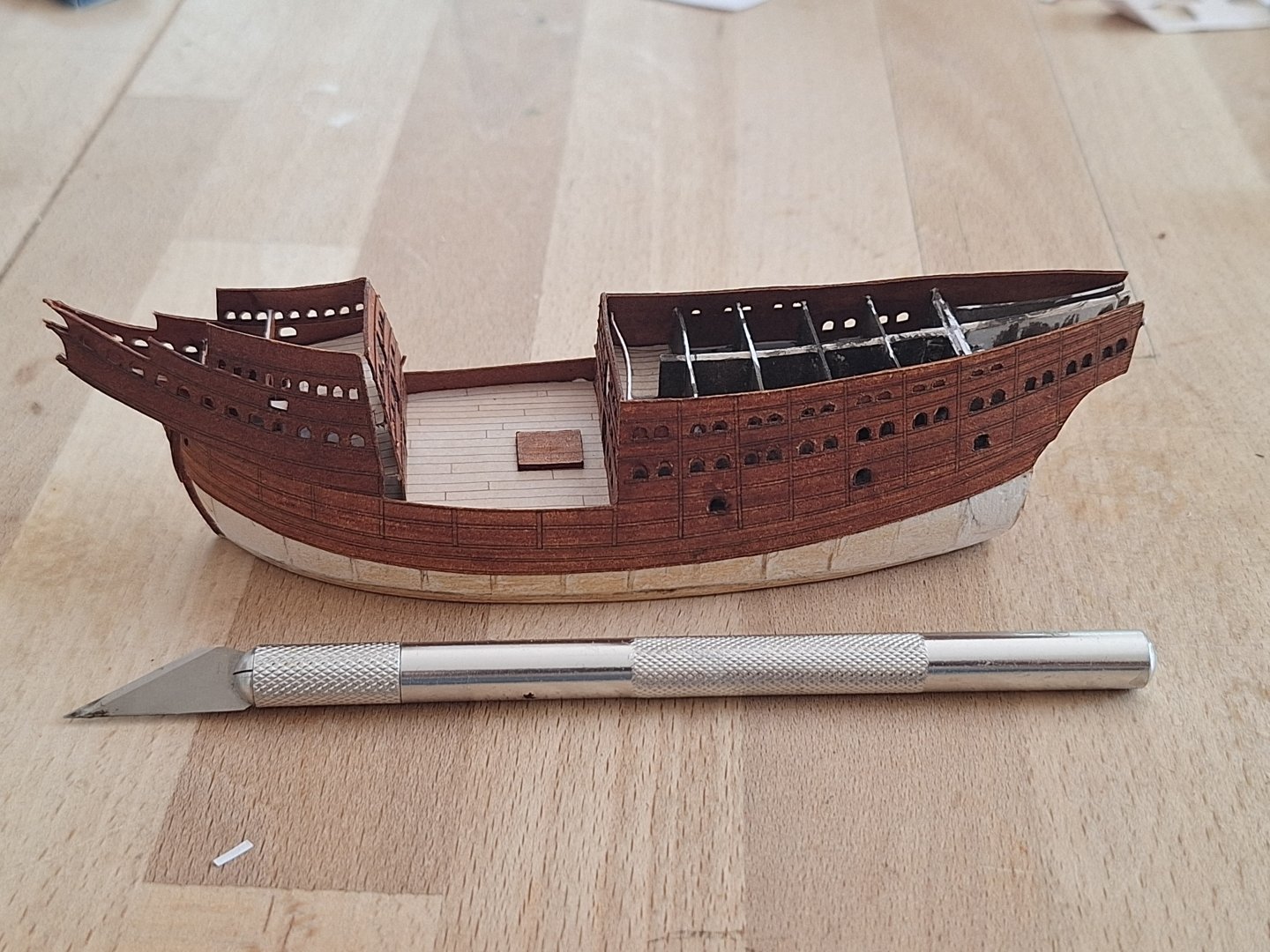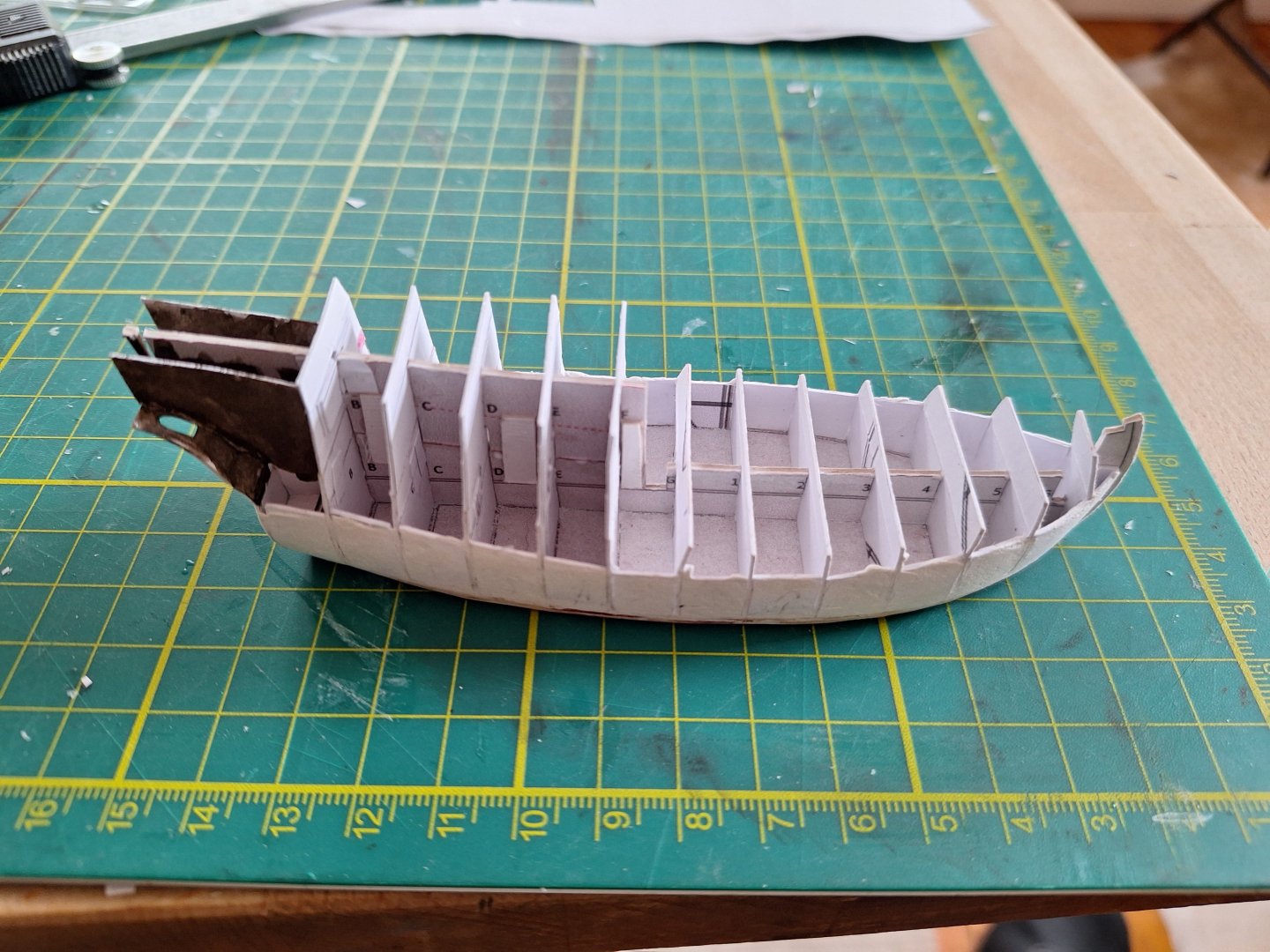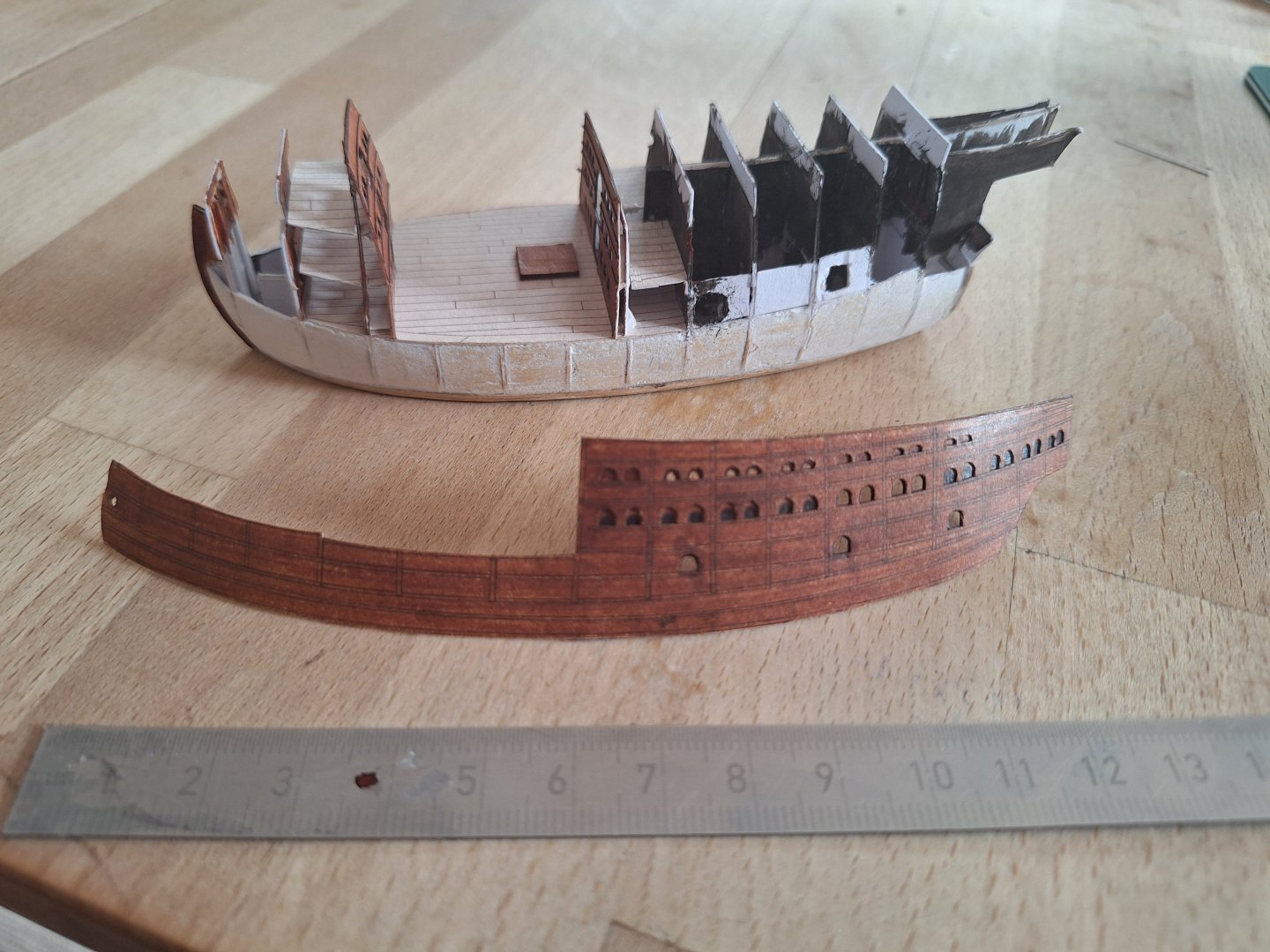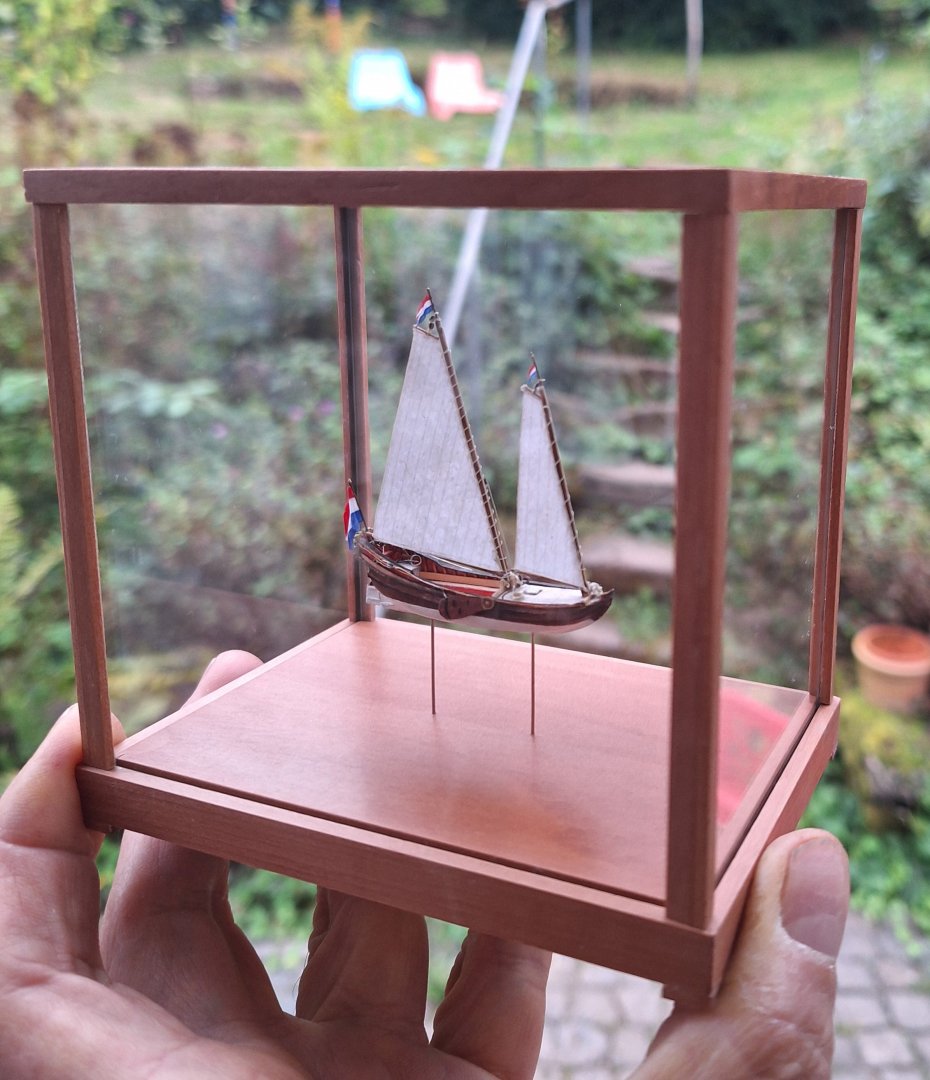
Alvb
Members-
Posts
136 -
Joined
-
Last visited
Content Type
Profiles
Forums
Gallery
Events
Everything posted by Alvb
-
Mary Rose 1511 — the epitome of the Northern tradition
Alvb replied to Waldemar's topic in Nautical/Naval History
Thank you for your detailed explanations. I consider your work extremely valuable. The constructions are understandable and easy to follow. The only thing that wasn't entirely clear to me was how the regression curves were determined. -
Mary Rose 1511 — the epitome of the Northern tradition
Alvb replied to Waldemar's topic in Nautical/Naval History
I am just a little surprised that on the one hand people had experience with such stability problems and knew methods to mitigate them, but on the other hand they built ships with these very deficiencies. -
The bulwarks are installed, as is the front bulkhead of the aft castle. The bulkhead of the forecastle will have to wait a bit longer, as some of the interior still needs to be added. Still missing are the lower planking on the hull and the uppermost decks of the castles, as well as the whales. It's turning out quite nice and already shows significant differences from the painting, especially in the shape of the lower bow. I'm looking forward to the rigging. Hopefully, I'll be able to capture the character of the sails. (Although the depiction of the mizzen seems illogical to me.) Best regards, Alvb
-
Roter Löwe 1597 by Ondras71
Alvb replied to Ondras71's topic in - Build logs for subjects built 1501 - 1750
Duyfken a tall ship??? -
Iberian (Basque) Atlantic Whaler ca. 1550 — as, dos, tres…
Alvb replied to Waldemar's topic in Nautical/Naval History
Ok, you explain your passage, which I don't quite understand, with this very passage. Not very helpful, don't you think? -
Iberian (Basque) Atlantic Whaler ca. 1550 — as, dos, tres…
Alvb replied to Waldemar's topic in Nautical/Naval History
Am I misunderstanding something? As, dos, tres doesn't sound like a long ship to me. -
It took a long time to find a suitable home for her. But this afternoon she was finally able to move in.
- 40 replies
-
- Speeljacht
- Card
-
(and 3 more)
Tagged with:
About us
Modelshipworld - Advancing Ship Modeling through Research
SSL Secured
Your security is important for us so this Website is SSL-Secured
NRG Mailing Address
Nautical Research Guild
237 South Lincoln Street
Westmont IL, 60559-1917
Model Ship World ® and the MSW logo are Registered Trademarks, and belong to the Nautical Research Guild (United States Patent and Trademark Office: No. 6,929,264 & No. 6,929,274, registered Dec. 20, 2022)
Helpful Links
About the NRG
If you enjoy building ship models that are historically accurate as well as beautiful, then The Nautical Research Guild (NRG) is just right for you.
The Guild is a non-profit educational organization whose mission is to “Advance Ship Modeling Through Research”. We provide support to our members in their efforts to raise the quality of their model ships.
The Nautical Research Guild has published our world-renowned quarterly magazine, The Nautical Research Journal, since 1955. The pages of the Journal are full of articles by accomplished ship modelers who show you how they create those exquisite details on their models, and by maritime historians who show you the correct details to build. The Journal is available in both print and digital editions. Go to the NRG web site (www.thenrg.org) to download a complimentary digital copy of the Journal. The NRG also publishes plan sets, books and compilations of back issues of the Journal and the former Ships in Scale and Model Ship Builder magazines.

